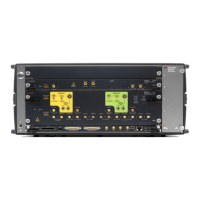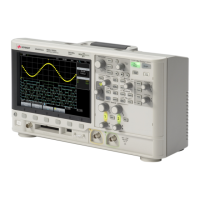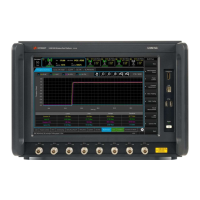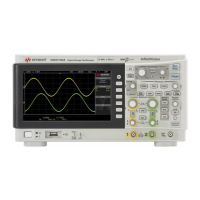376 Keysight M8000 Series of BER Test Solutions User Guide
7 Setting up Patterns
• Loopback through - Specifies if the real-time equalization is done while
going into loopback through L0 / Recovery or through Configuration.
When selecting Loopback through L0-Recovery, the LTSSM does a link
training as before. Selecting Loopback through Configuration does a
link training without real time equalization. When theLoopback through
Configuration is selected, all preset parameters are disabled.
• Trigger State - Specifies the trigger state. It can be an Add-in-Card
(AIC) or a root- complex.
• Lane - Specifies the lane number being used.
• Link - Specifies the link number being used.
• Compliance Receive Bit - Specifies whether the compliance received
bit is asserted or deasserted.
• Link Equalization - Determines whether link equalization should be
performed. It can either be aborted after phase 1 (Bypass) or fully
executed. In the second case it can be determined whether only preset
or all (i.e. individual cursor) requests should be accepted.
• Start Preset - Specifies the preset used by the J-BERT’s TX port after
switching to Gen 3 operation and when operating as an upstream
device.
• DUT Preset Hint - Specifies the preset hint being sent by the J-BERT to
the DUT during phase 0 of the link equalization procedure. It is only
used when the BERT operates as upstream device.
• DUT Initial Preset - Specifies the preset the J-BERT transfers to the
DUT in phase 0 of the link equalization procedure. It is only used when
the BERT operates as an upstream device.
• DUT Target Preset - Specifies the preset the J-BERT requests the DUT
to switch to during link equalization. Depending on the role the J-BERT
is playing, this is done in either phase 2 or 3 of the link equalization
training.
• Speed Change Control - Specifies whether the speed change to Gen3
(i.e. 8 Gbps) speed will be initiated by DUT or BERT during link training.
It is only used when the BERT operates as a downstream device.
If not specified DUT will initiate the speed change and will also request
BERT for the same. It is only used for the DUT type as System Board.
• User Calibrated Presets - Specifies whether BERT's Data Out should
use user-calibrated presets or standard presets during link training.
Enabling it means that BERT’s Data Out will use
de-emphasis/pre-shoot values that had been previously calibrated,
otherwise it will use standard de-emphasis/pre-shoot values defined by
the PCIe3 specification. By default this option is turned off which means
that standard presets will be used.

